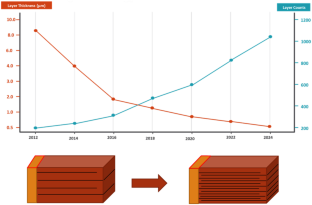Studies on Ni termination of a multilayer ceramic capacitor with high capacitance by using DC electrodeposition
Abstract
In this study, it is shown that since the distance of two adjacent inner electrodes of multilayer ceramic capacitors (MLCC) with high capacitance is close enough, the termination of the MLCCs can be made by direct plated Ni termination instead of by the existing dipped and cured Cu termination. The characteristics of termination MLCC made by direct nickel plating are characterized. Besides, Ni termination of MLCCs with high capacitance made by electroplating is shown to perfectly bond the electrodes to a nearly uniform surface with high adhesive strength. The inner and outer electrodes are made of the same nickel and the ohmic contact is very well shown, corresponding to excellent dielectric properties. The novel Ni termination of MLCCs with high capacitance made by electroplating is integrated with an inner Ni electrode at a low temperature process and shows the prefect performance of termination including an extreme low internal stress and much denser void free termination. This is completely different from the existing Cu termination connected with ceramic brick done by dipping at high temperature curing in a nitrogen atmosphere. Model analysis of electric field distribution and charge transport of electrochemical analysis were also performed for a better understanding of the electrodeposition process to make an Ni termination of MLCCs with high capacitance.


 求助内容:
求助内容: 应助结果提醒方式:
应助结果提醒方式:


